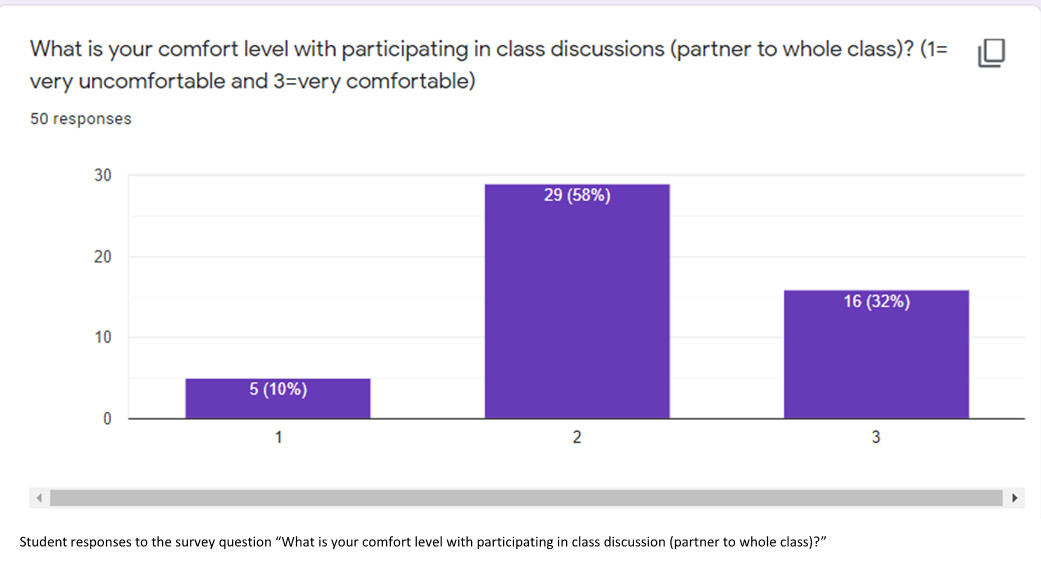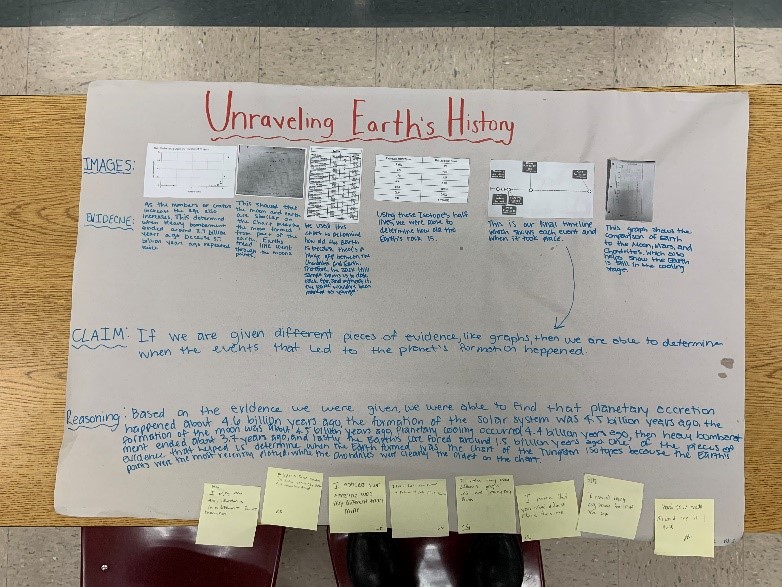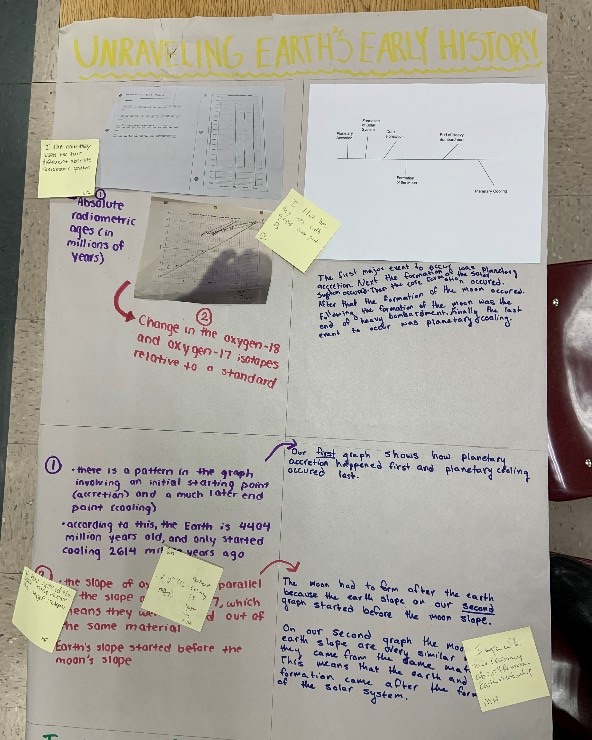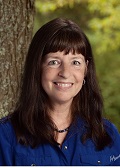Next Gen Navigator
Going Public: Revealing Student Thinking in Science by Missy Holzer
By Kate Falk
Posted on 2020-02-26
Our classrooms are dynamic places where young learners gather to figure out the natural world. How can we be sure they are all making sense of the phenomena during this process? How do we know what they are thinking?
We tend to grasp how they think through our selected formative and summative assessments, but this is not enough if we want our students to develop proficiency in science. We need our students to “go public,” revealing their thinking, their models, and their ideas, and it is our challenge to ensure all our students do this. When students employ science and engineering practices and crosscutting concepts to make sense of the phenomena in question, their thinking becomes apparent. However, as science teachers, we must avoid resuming our old assessment routines and focus our energy on the process and progress students achieve while making sense of phenomena.
We can do this by listening to students argue from evidence during discussions, by analyzing their Claim Evidence Reasoning (C-E-R) posters, and by closely examining their model revisions during a lesson set or unit. At the heart of two curriculum projects, OpenSciEd and NGSX, students go public with their ideas. Borrowing from these projects as well as STEM Teaching Tools, I armed myself this year with tools and routines to encourage all my students to participate in a community of scientific practice.
As a class, we identified norms for discussions centered on respect, equity, commitment to community, and advancing our thinking. We refer to our list to ensure everyone is meeting the goals of our discussions. But I found that having norms is not enough to foster lively discussions advancing scientific knowledge, so I decided to survey my students about their feelings toward participating in discussions. The results showed they prefer to participate in small-group discussions; however, in those small groups, they are unsure about how to ask probing questions.
With help from STEM Teaching Tools PD Playlist: Promoting Student Science Talk in the Classroom, I introduced “partner conversation supports” to my students, and incorporated “Talk Moves” from TERC’s Talk Science Primer into my discussion routines. Since I combined these resources with our class norms, my students are now having more focused discussions within their small groups, and they are now the ones driving whole-class discussions that include everybody’s voices.

An alternative to class discussions that I find to be more enjoyable for some students in making their thinking visible is to create team posters of their C-E-Rs, followed by Gallery Walks. In a recent sensemaking lesson, students considered three lines of evidence while addressing their claim about the co-evolution of biology and geology on Earth. In small groups, they discussed their lines of evidence in relation to the mechanisms for change over geologic time. Each group considered different pieces of evidence, which translated into variation across the C-E-Rs. During the Gallery Walk, a student from each team presented their poster, and after the presentations, students visited each poster, equipped with sticky notes to leave comments.
The non-threatening nature of this routine not only encouraged all students to participate in some way, but also made their thinking visible to the entire class. Their resulting individual C-E-Rs were much richer than before, which I think can be attributed to their group effort in analyzing and interpreting the data and sharing their thoughts using posters, both of which pushed them to think more deeply about their claims.


In this last routine, students are only “going public” with me as they build and revise their models. It is unbelievably enlightening to monitor student progress over a larger unit as they make sense of phenomena. Recently, my students were challenged to determine the order of events in Earth’s early history, and this required them to start with an initial model, then revise it as more evidence was introduced. They worked in small groups to analyze the data, but they worked individually to create their arguments. With our learning management system, I was able to access their work during the two weeks of the unit. I reviewed their work and adjusted my lessons as needed, and while doing so, I found it fascinating to see how students revised their models along the way as more evidence was introduced. At the end of the unit, students combined their ideas to create one model they shared with the class.
These few routines not only connect with multiple science and engineering practices (NRC 2012, and NGSS 2013), but also mirror the practice of scientists. I would be doing a disservice to my students if we did not debrief the use of these routines as they relate to the work of scientists. If I don’t have a first-person example to share, I seek examples from the history of science within my domain, or I share resources such as Tools of Science. How do your students go public with their ideas?
References
National Research Council (NRC). 2012. A framework for K-12 science education: Practices, crosscutting concepts, and core ideas. Washington, DC: National Academies Press.
NGSS Lead States. 2013. Next Generation Science Standards: For states, by states. Washington, DC: National Academies Press. www.nextgenscience.org/next-generation-science-standards.
 Missy Holzer, PhD, has taught science in New Jersey for more than 30 years and loves her job more today than when she first started. Her philosophy of education includes using hands-on, minds-on inquiry using real-time and original data and data tools to encourage lifelong learning in her students. Holzer enjoys field research immensely and has assisted with data collection in places such as Svalbard; Nicaragua; Kenya; Ecuador; Jamaica; Costa Rica; off the coasts of Oregon, South Carolina, Cape Cod; and Chile. She is a Stratospheric Observatory for Infrared Astronomy (SOFIA) Ambassador and worked alongside astronomers to collect astronomical data in the stratosphere. In the classroom, she uses her field experiences to develop units of study to inspire students to explore their natural world. Holzer is secretary of National Earth Science Teachers Association (President 2012–2014), has served on many state and national committees, and presents at local, regional, and national conferences. She served on the development team for the 2009 New Jersey Science Core Content Standards and on the State Leadership Review Team for the NGSS, and authored the Capstone High School Science Model Curriculum after New Jersey adopted the NGSS. She is an Achieve peer review panelist, reviewing lessons and units for NGSS congruency. Through workshop offerings, she supports formal and non-formal educators as they transition to using NGSS. She holds a MAT in science education, a MS in geography, and a PhD in science education.
Missy Holzer, PhD, has taught science in New Jersey for more than 30 years and loves her job more today than when she first started. Her philosophy of education includes using hands-on, minds-on inquiry using real-time and original data and data tools to encourage lifelong learning in her students. Holzer enjoys field research immensely and has assisted with data collection in places such as Svalbard; Nicaragua; Kenya; Ecuador; Jamaica; Costa Rica; off the coasts of Oregon, South Carolina, Cape Cod; and Chile. She is a Stratospheric Observatory for Infrared Astronomy (SOFIA) Ambassador and worked alongside astronomers to collect astronomical data in the stratosphere. In the classroom, she uses her field experiences to develop units of study to inspire students to explore their natural world. Holzer is secretary of National Earth Science Teachers Association (President 2012–2014), has served on many state and national committees, and presents at local, regional, and national conferences. She served on the development team for the 2009 New Jersey Science Core Content Standards and on the State Leadership Review Team for the NGSS, and authored the Capstone High School Science Model Curriculum after New Jersey adopted the NGSS. She is an Achieve peer review panelist, reviewing lessons and units for NGSS congruency. Through workshop offerings, she supports formal and non-formal educators as they transition to using NGSS. She holds a MAT in science education, a MS in geography, and a PhD in science education.
Note: This article is featured in the February 2020 issue of Next Gen Navigator, a monthly e-newsletter from NSTA delivering information, insights, resources, and professional learning opportunities for science educators by science educators on the Next Generation Science Standards and three-dimensional instruction. Click here to sign up to receive the Navigator every month.
Visit NSTA’s NGSS@NSTA Hub for hundreds of vetted classroom resources, professional learning opportunities, publications, ebooks and more; connect with your teacher colleagues on the NGSS listservs (members can sign up here); and join us for discussions around NGSS at an upcoming conference.
The mission of NSTA is to promote excellence and innovation in science teaching and learning for all.
Assessment Equity Inquiry Science and Engineering Practices Teaching Strategies Middle School

